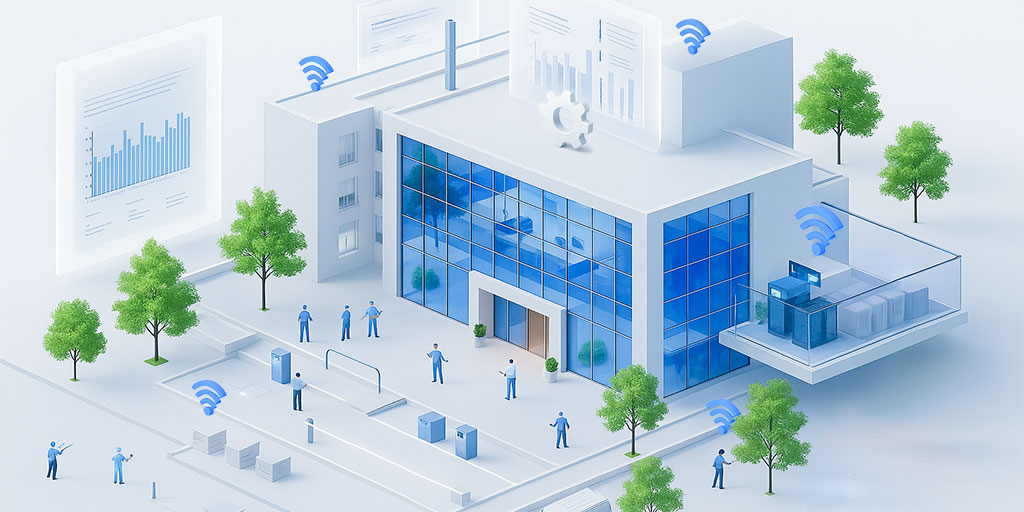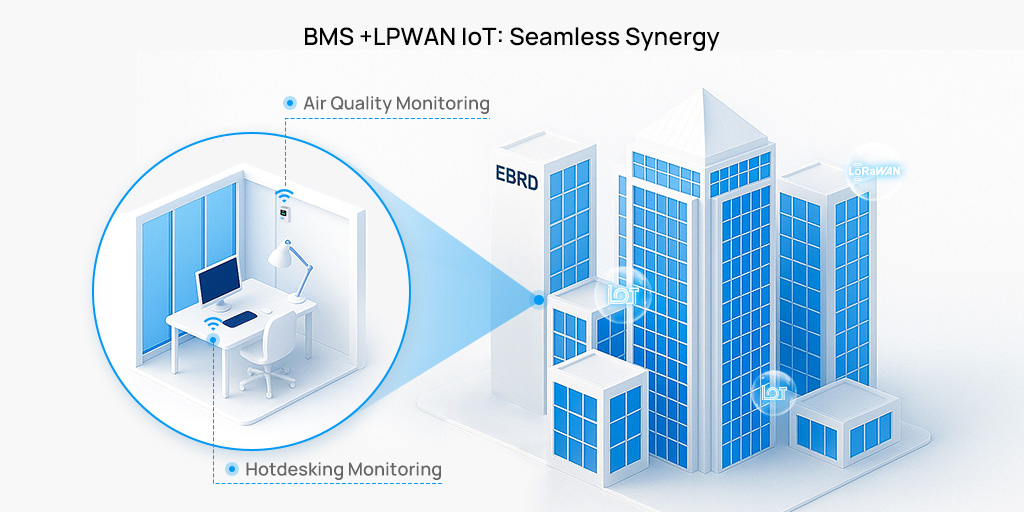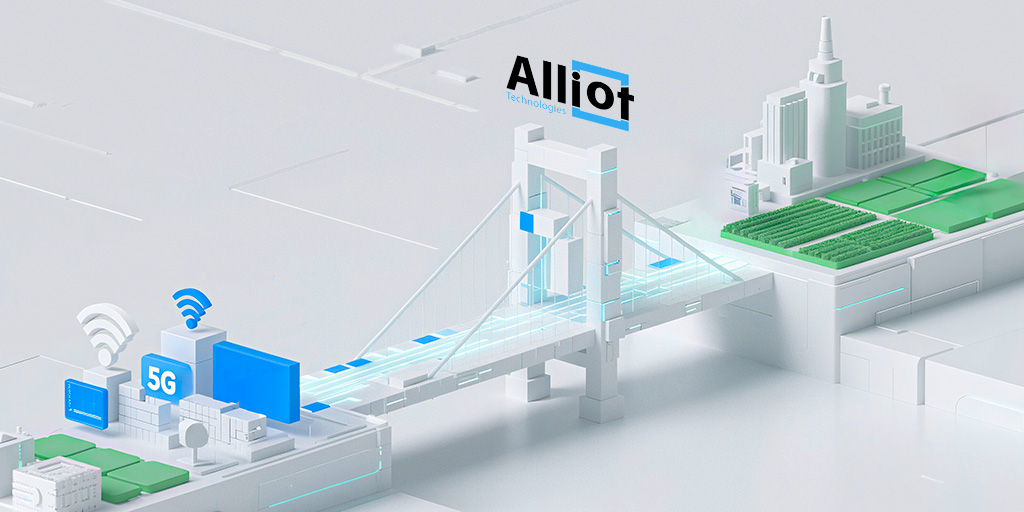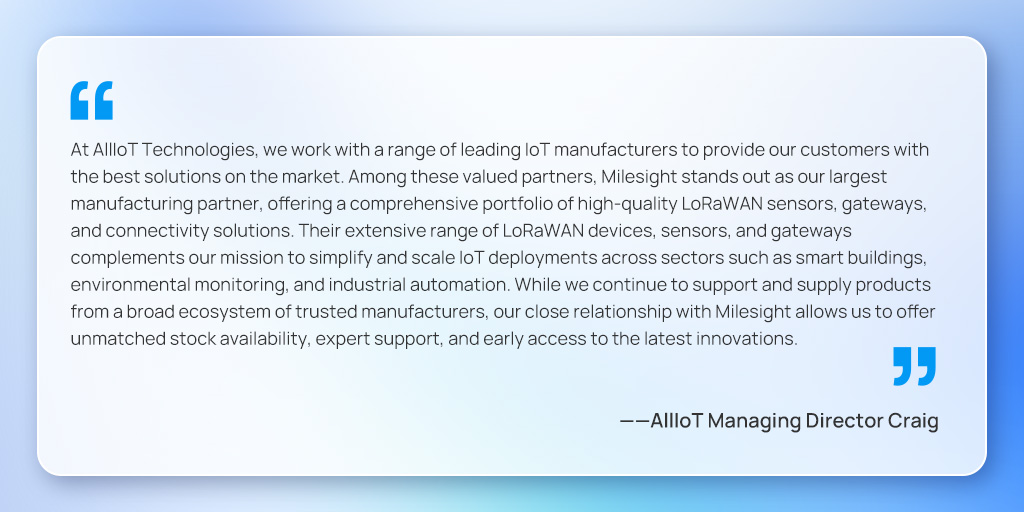Discover how Milesight is helping AllIoT Technologies revolutionize smart buildings in the UK with LoRaWAN® IoT solutions—achieving up to 33% energy savings. Real-world use cases, market insights, and AllIoT's tips inside.
The UK is seeing fast growth in IoT—covering smart buildings, smart agriculture, and smart city, real-world projects are reshaping industries and setting new standards for sustainability and performance.
At the center of this transformation is AllIoT Technologies, one of the UK's most experienced and trusted IoT distributors. Since 2017, AllIoT has worked with global partners like Milesight to bring powerful LoRaWAN® solutions to life across smart cities, facility management, and beyond. In this interview, we speak with the AllIoT team to explore UK market trends, share best practices, and reveal how scalable, cost-effective IoT is becoming a reality—solution by solution.
UK Smart Building Market: Trends & Insights
 The Internet of Things (IoT) has evolved over the years and people are becoming more familiar with it and enjoying the benefits of smart solutions. Based on AllIoT's years of experience, how have IoT solutions helped the UK market in which sectors primarily?
The Internet of Things (IoT) has evolved over the years and people are becoming more familiar with it and enjoying the benefits of smart solutions. Based on AllIoT's years of experience, how have IoT solutions helped the UK market in which sectors primarily?
A: IoT has had a significant impact in the UK and Ireland. The sectors most affected include smart city, smart building, and smart agriculture. These areas can be broken down into specific solutions: energy monitoring, which delivers around 33% savings; indoor air quality (IAQ) and HVAC management, which help improve occupant well-being, ensure thermal comfort, and optimize energy use in buildings.

Workplace and facility management use cases
 Efficiency and productivity are crucial for workplace and facility managers. Can you share with us how AllIoT is helping its customers to effectively apply smart solutions, and what aspects are most important for these customers?
Efficiency and productivity are crucial for workplace and facility managers. Can you share with us how AllIoT is helping its customers to effectively apply smart solutions, and what aspects are most important for these customers?
A: The use cases within workplace and facility management are broad and diverse, ranging from washroom monitoring and hotdesking to cold chain compliance. Our focus is on effectively replicating proven solutions.
This approach simplifies processes for our sales and support teams and allows us to better educate clients before and after deployment. Thanks to past commercial deployments, we can also provide clear expectations for potential cost savings—helping customers assess whether an IoT project is viable based on cost-benefit analysis.
This ensures expectations are properly managed, met, and even exceeded. We believe the most important factor for customers is a transparent understanding of what's possible, how it will work, and what outcomes to expect. Delivering on this has enabled customers to leverage existing networks and gain more value at a lower cost per return.

LoRaWAN Integration with BMS for Smarter Building Operations
 For the smart building industry, do you see a match between IoT solutions and traditional BMS systems such as Niagara in practice? If so, can you share some projects with us?
For the smart building industry, do you see a match between IoT solutions and traditional BMS systems such as Niagara in practice? If so, can you share some projects with us?
A: We work with a number of Niagara distributors, and it's quite interesting how we each see each other's business differently. The traditional BMS integrators see us and the LPWAN (Low Power Wide Area Network) IoT providers as an addition to their current solution allowing greater flexibility to add more data points (things that collect data that can be analyzed) without the need and cost or complexity of cabling.This makes installation faster and easier compared to traditional BMS.
From their perspective, these additional sensors are seen as addons rather than standalone solutions. In contrast, we often start where no BMS is in place, using independent data points sent to a cloud dashboard—essentially creating a lightweight BMS alternative. So the reality likely lies somewhere in between.
One of our partners implemented a project at the EBRD Building in Canary Wharf, where a full BMS was already in place. They successfully integrated a large number of LPWAN IoT sensors for hotdesking, air quality monitoring, and more. What we’ve learned is that these solutions are highly flexible, and BMS and LPWAN IoT can work exceptionally well together in any capacity.

 AllIoT Technologies was incorporated back in 2017 and has seen the IoT and LoRaWAN market evolve from the very beginning. Along the way AllIoT has successfully landed several projects. Can you share more of the behind the story?
AllIoT Technologies was incorporated back in 2017 and has seen the IoT and LoRaWAN market evolve from the very beginning. Along the way AllIoT has successfully landed several projects. Can you share more of the behind the story?
A: The inception of AllIoT Technologies was driven by a clear vision: to bridge the gap between cutting edge technology and practical applications. We saw a world where IoT could revolutionise various sectors, from healthcare and agriculture to manufacturing and smart cities. However, we also recognised the significant challenges in adopting IoT solutions, such as high costs, long lead times, and lack of expertise.
That's why we set out to support MSPs and Technology integrators with modular building block solutions that simplify IoT adoption.Since then, we've partnered with leading manufacturers, software and connectivity providers to offer you access to be largest selection of IoT devices and services. We enable you to access the data you require in the simplest, most accessible way while delivering a fast return on your investment.


How AllIoT Powers Smarter Building Operations in the UK with LoRaWAN® Solutions